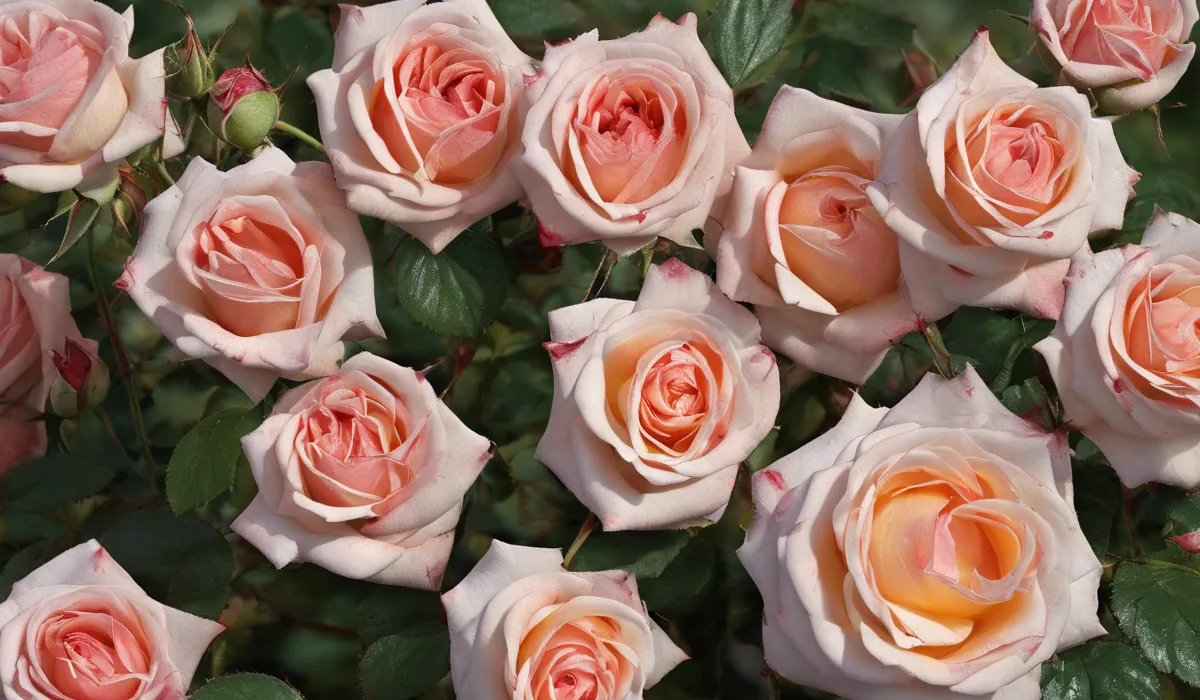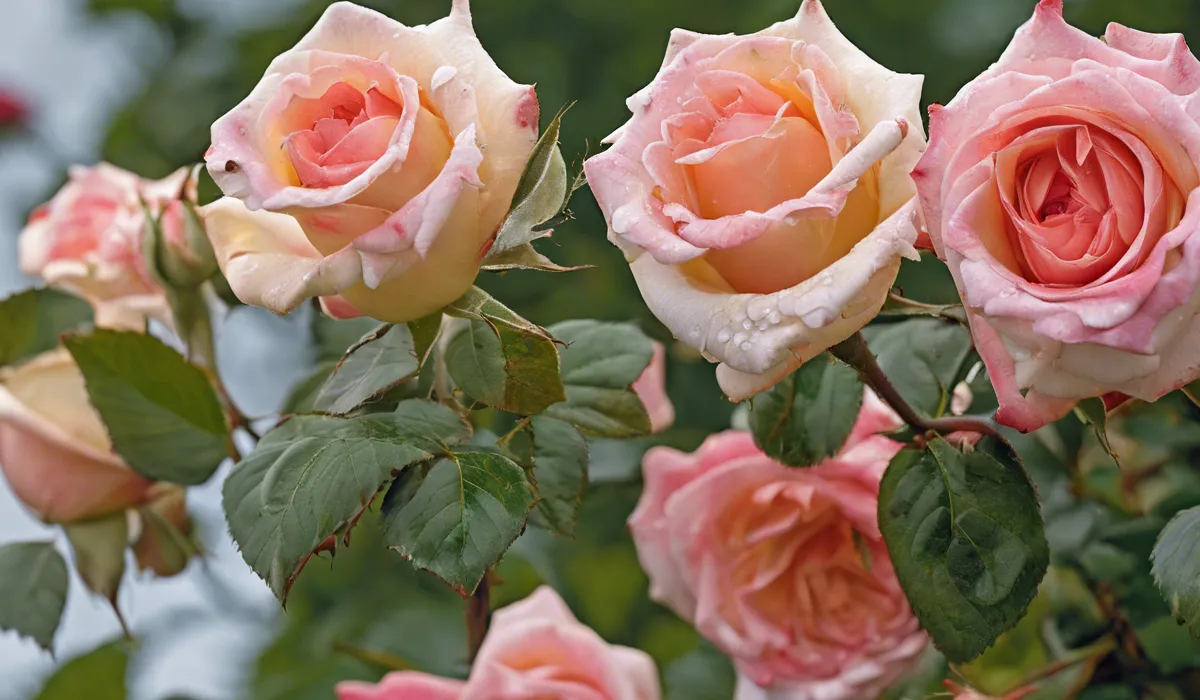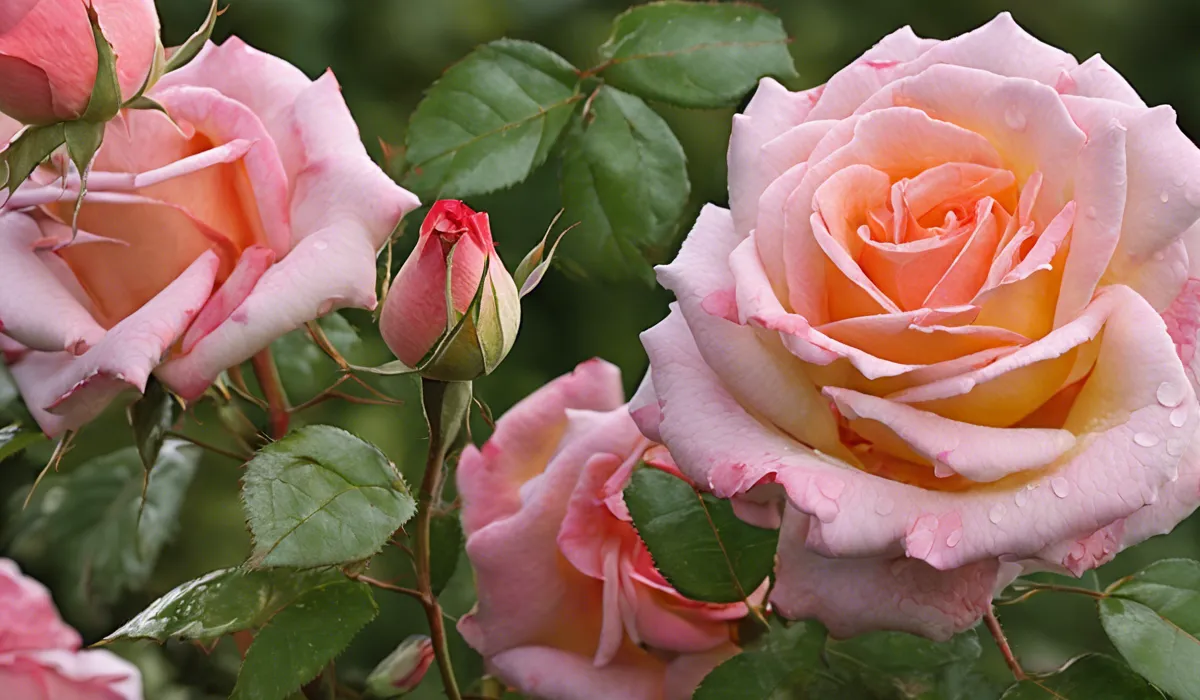To eliminate powdery mildew on roses, prune infected areas, dispose of the debris, and increase air circulation around the plants.
Apply a fungicide or a mixture of baking soda and water as a natural treatment. Regularly inspect plants for early signs to prevent spread.
Identification and Understanding Powdery Mildew on Roses

What Is Powdery Mildew
Powdery mildew is a fungal disease that attacks many plants, including roses. It appears as a white or gray powdery substance on the leaves, stems, and buds of the plant.
This disease thrives in warm, dry climates with high humidity, especially when the nights are cool.
Lifecycle of the Fungus
The fungi that cause powdery mildew reproduce rapidly, releasing spores that attach to the rose plants.
These spores germinate and spread, forming a new layer of mildew. The cycle continues as long as conditions are favorable, with the fungi overwintering on plant debris or infected roses.
Factors Contributing to Mildew Growth
Powdery mildew is more likely to develop when the plants have poor air circulation and high humidity around the foliage.
Overcrowding and excessive shade also contribute, as does watering from above, which wets the leaves and provides a perfect environment for the fungus.
Potential Damage to Roses
If powdery mildew is not treated, it can cause leaves to become disfigured, turn yellow, and drop prematurely.
This weakens the rose plant and can lead to fewer blooms. The overall health of the rose can decline, making it susceptible to other diseases and pests.
Preventive Measures to Protect Roses

Choosing Resistant Varieties
Selecting rose varieties that are resistant to powdery mildew is a crucial first step in prevention.
These varieties have been bred to be less susceptible to the disease, providing a stronger foundation for a healthy garden.
Proper Planting Techniques
When planting roses, ensure proper spacing to encourage air flow. This helps to keep the foliage dry and less hospitable for powdery mildew spores.
Planting in a location with good sunlight exposure will also help to minimize the risk of mildew.
Pruning and Air Circulation
Pruning is not just about shaping the rose bush; it is also about removing excess growth to improve air circulation.
This practice helps to reduce humidity around the plant, making it harder for the mildew to thrive.
Watering and Mildew Prevention
Water your roses early in the day so that the foliage has time to dry before nightfall. Use drip irrigation or water at the base of the plants to keep the leaves dry, further reducing the risk of powdery mildew.
Sunlight and Fertilization
Sunlight is a natural deterrent to powdery mildew. Ensure your roses get at least six hours of direct sunlight each day.
Proper fertilization keeps roses healthy and better equipped to fend off diseases, including powdery mildew.
Treatment Options for Infected Rose Plants

Natural Remedies
For a natural approach to treating powdery mildew, consider using a baking soda mixture or milk spray.
These solutions can help to change the pH on the leaf surface, making it less inviting for the mildew to grow.
Cultural Practices for Disease Control
Removing and disposing of infected leaves is an immediate action that can help to control the spread of powdery mildew.
Be sure to clean up all the debris from around the base of the plant to reduce the chance of reinfection.
Chemical Fungicides
When natural remedies are not enough, chemical fungicides may be necessary. It is important to follow the instructions carefully and apply the fungicide as directed.
This will help to ensure effectiveness and reduce the risk of harming the plant.
Ongoing Care Post-Treatment
After treating powdery mildew, continue to monitor your roses regularly for any signs of the disease returning.
Keeping up with preventive measures, such as proper watering and pruning, will help to keep your roses healthy and reduce the likelihood of future outbreaks.
FAQs About Getting Rid of Powdery Mildew on Roses
How do you prune roses to eliminate powdery mildew?
Carefully prune the infected areas, ensuring you remove all parts with signs of mildew, and dispose of the debris away from your garden to prevent further spread.
What can I apply to my roses to treat powdery mildew naturally?
As a natural treatment, you can apply a mixture of baking soda and water to the affected areas of your roses to help control the powdery mildew.
When should you apply fungicide to roses for powdery mildew?
Apply a fungicide as soon as you notice signs of powdery mildew to prevent its spread, and follow the manufacturer’s instructions for the best results.
How can increasing air circulation help prevent powdery mildew on roses?
Increasing air circulation around rose plants helps to reduce humidity and moisture on leaves, making the environment less hospitable for powdery mildew to thrive.
What should you regularly inspect on roses to prevent the spread of powdery mildew?
Regularly inspect your roses for early signs of powdery mildew, such as white or gray powdery spots on the leaves, stems, and buds, to prevent its spread.
Final Thoughts
To combat powdery mildew on roses, it’s essential to prune and remove infected areas promptly, ensuring all debris is disposed of properly.
Improving air circulation around the plants is crucial, as is applying a suitable fungicide or a natural alternative like a baking soda-water mixture.
Vigilant plant inspection aids in early detection and helps prevent the disease from spreading.
